Five Eastern Illinois University alums from four different decades are members of a unique “fraternity.”
All five men have longtime connections with Major League Baseball’s Kansas City Royals as players, coach, trainer, radio broadcaster and scout. They got to the big leagues at different times but shared in the game’s long season while valuing their connection to Eastern through each other.
Marty Pattin, who received both a bachelor’s and master’s degree from Eastern, pitched 13 seasons in the big leagues, including six years with the Royals, from 1974 to 1980.
Kevin Seitzer, an 11th round pick of the Royals in 1983, led the American League in hits with 207 as a rookie in 1987 and spent six years of his 12-year career in KC. He is now the hitting coach for the Royals.
Several publications have listed both Pattin and Seitzer as among the top 50 players in Kansas City Royals history.
Nick Swartz, a 1977 Eastern graduate, served as head trainer for the Royals from 1991 to 2009.
Fred White, although he did not graduate from Eastern, was a student for two years in the 1950s. He later was part of the Royals radio broadcast team from 1974 to 1998 and currently serves as Director-Broadcast Services and Royals Alumni.
Tom McDevitt, a 1956 Eastern grad and longtime academic adviser and baseball coach for the Panthers, scouted for three different Major League Baseball teams, including five seasons for the Royals.
All five are from small towns in Central Illinois, have a strong work ethic, bucked the odds to reach the pinnacle of professional baseball and appreciate those who helped them along the way.
“It’s kind of neat to have that connection between Eastern and the Royals,” said Pattin, who won 114 games in his career, was an All-Star and pitched in the 1980 World Series, striking out Greg Luzinski and eventual Hall of Fame third baseman Mike Schmidt in his one scoreless inning of work.
“I was tickled that Kevin (Seitzer) went to Eastern,” Pattin added. “He even worked at Marty’s.”
Marty’s is the off-campus restaurant/bar named for Pattin. According to Seitzer, it is a gathering spot for Panther baseball players.
“Marty was a legend to us,” said Seitzer, who thought so much of Pattin that he wore the same Royals uniform, No. 33, that Pattin had worn a few years earlier.
“Some of his memorabilia hung in Marty’s,” Seitzer recalled. “ It was a baseball hangout.”
And before the establishment was known as Marty’s, it was Walt’s, named for owner Walt Warmoth, who was a father figure to Pattin and others, including White.
For the many connections the five men share, they also traveled their own unique paths to professional baseball and Kansas City.
Marty Pattin
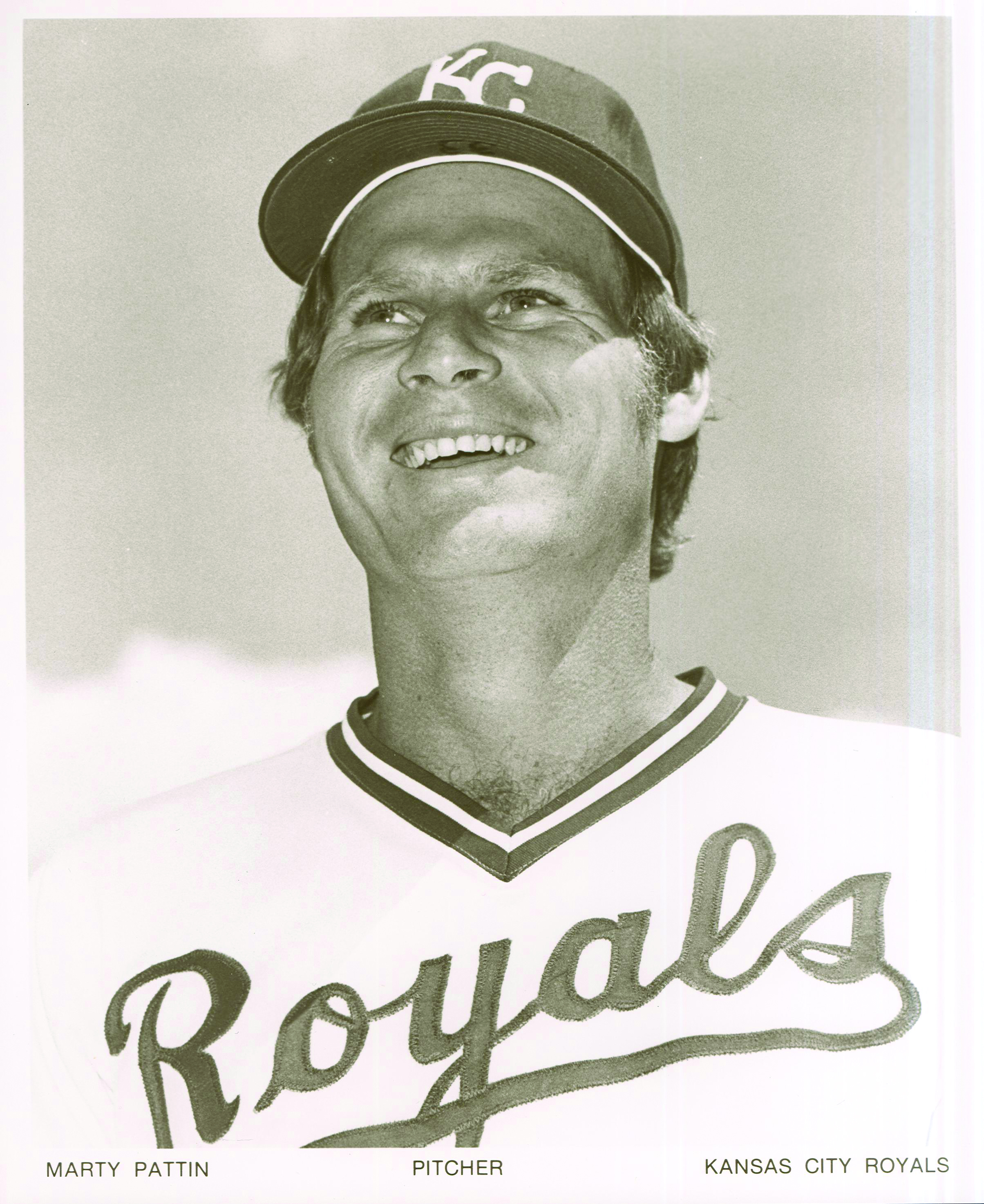
Although Pattin starred at Charleston High School and at Eastern, Major League scouts were skeptical that Pattin had the physical tools to reach the big leagues.
Pattin led the Panthers to the 1964 NAIA world series as a junior and was 4-0 his senior year before colliding with teammate Gene Vidoni trying to catch a popup. The result was a dislocated left shoulder.
“I’d been exposed to some scouts for several years,” Pattin said. “Scouts weren’t sure I was big enough to be a big-league pitcher. It made me more determined to make it to the big leagues and to stay there.”
That led to one of Pattin’s two nicknames – Bulldog. His other nickname, Ducky, stems from his ability to deliver spot-on imitations of Donald Duck.
Drafted by the California Angels in 1965, Pattin pitched for Seattle, Milwaukee and Boston before being traded to the Royals in 1974.
“Coming from a small town and growing up there, I got used to the Midwest,” Pattin said of his trade to Kansas City. “The first time I experienced going to a big city was in 1968 with the Angels in the Anaheim-Los Angeles area. It was a lot easier to get used to an area like Kansas City. I enjoyed playing everywhere but I was more comfortable in Kansas City and Milwaukee.”
Pattin said he was helped along the way by legendary Charleston High School coach Merv Baker and by Warmoth.
Baker arranged for Pattin to work for Warmoth during Pattin’s junior year of high school. He stayed there all through college, too. And the two remained close for many years.
“That was probably the greatest time of my life,” Pattin said of his years with the Warmoths. “It was a time for setting goals.
“I made up my mind I wanted to be a better pitcher. Each league I participated in I just worked hard and kept gaining confidence to be a complete pitcher.”
Pattin said he was thrilled that Eastern created the Baker/Warmoth Hall of Champions in the Lantz Building this year to honor the two men who contributed so much to EIU athletics, as well as to his career.
Even after reaching the Major Leagues in 1968, Pattin continued to live in Charleston during the offseason until 1981, when he settled in Kansas.
“I was fortunate to work with the (Eastern) baseball team in the winter,” he said. “That’s when I met Nick Swartz. I always wanted to be in the best shape I could be for spring training. I never took anything for granted.”
Pattin said he followed some advice from Hall of Fame pitcher Warren Spahn.
“He always said to never give in to the hitter with his pitch when you’re behind in the count. I kind of adopted that philosophy.”
Pattin said learning to throw the slider from pitching coach Wes Stock in Milwaukee aided his progression as a Major League pitcher.
“I gained the confidence to throw it in any situation,” he said. “I had control. That’s the name of the game. I was able to go in and out, up and down.”
In more than 2,000 innings pitched in the big leagues, Pattin walked just 603 batters while striking out 1,179 hitters, including the two Phillies stars in the 1980 World Series when Pattin was 37 years old.
“It was quite a thrill just to be in there in the World Series,” he said. “A lot of things go through your mind. I was so thankful that so many people had taken an interest in my career – Merv Baker, Walt Warmoth, my high school coach Paul Foreman, my Eastern baseball coaches Jack Kaley and Bill McCabe and so many others. It never entered my mind that I wouldn’t be successful in that situation.”
Kevin Seitzer
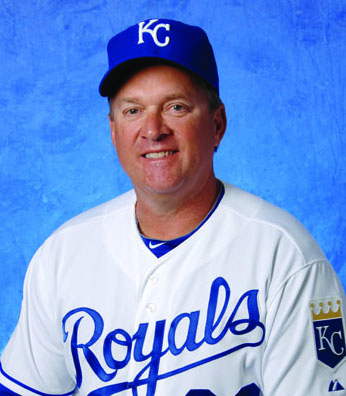
It was 10:30 on a spring morning this past April, and Kevin Seitzer, the hitting coach for the Royals, was on his way to Royals Stadium to prepare for a 7 p.m. game.
He was going in to break down video on the Toronto Blue Jays’ pitcher the Royals were to face that night. Then he would oversee batting practice, go through the advance scouting report with the hitters, check the opposing pitcher’s strikeout-to-walks ratio and his hitters’ batting averages against that guy, more batting practice, a coaches meeting and then a meeting with the hitters.
“It’s a lot longer day for a coach than for me when I played,” Seitzer said with a laugh.
Seitzer was a standout at Eastern in the early 1980s, batting over .400 all three seasons of his varsity career and leading then-Coach Tom McDevitt’s Panthers to second place in the 1981 NCAA Division II World Series.
“It was just awesome,” Seitzer said of his Panther playing career. “It was one of the most memorable experiences in my career. We had the tightest team chemistry I’ve ever had in baseball.”
Seitzer said he still gets together with some of his former Panther teammates occasionally, and fondly remembers McDevitt, the Panther skipper.
“I pretty much owe everything to him and my dad,” Seitzer said. “When I got to college, it was ‘Skip’ pouring into me the things I needed to get to the big leagues. We played fundamentally sound. When I got to the minors, I saw guys who were really talented but they didn’t have the education that ‘Skip’ poured into me. He was a second father to all of us.”
Seitzer, who came to Eastern from Lincoln, Ill., burst on the Major League scene in a big way, batting .323 in a September 1986 callup. He repeated that .323 average with 15 home runs and a league-leading 207 hits in 1987 to finish second to Mark McGuire as American League Rookie of the Year, leading the league in hits and being named to the All-Star team. He still holds the Royals’ team record for career on-base percentage.
After six years in Kansas City, he played for several other teams and got to the 1997 World Series as a member of the Cleveland Indians. He is thrilled to be back in Kansas City as the hitting coach. He also owns a baseball-softball training facility with former Royals teammate Mike Mcfarlane called Mac-N-Seitz.
“It’s awesome,” he said of being back with the Royals. “I live here. I sleep in my own bed. I have a business that’s five minutes from my house and the stadium is 20 minutes away.
“God really blessed me to get to where I did and to stay as long as I have. It’s a blessing to be where I am now as a coach.”
He also made sure he got his bachelor’s degree from Eastern despite signing a pro baseball contract after his junior year.
“It gave me a lot of peace to know I had that degree,” he said.
Nick Swartz
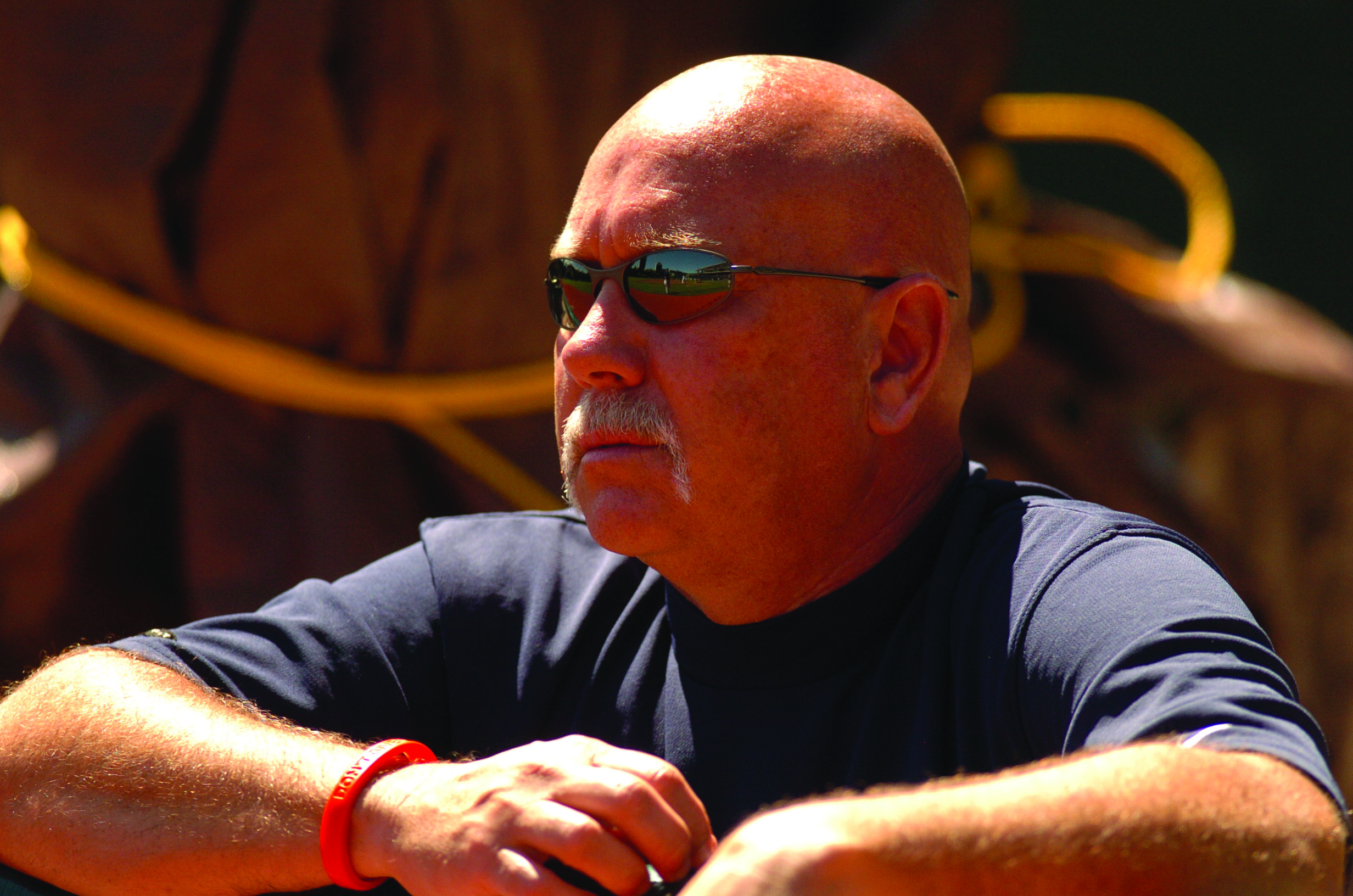
When Nick Swartz enrolled at Eastern in the fall of 1974, he already knew what he wanted for a career – to be a trainer for a professional sports team.
Growing up in Atwood in central Illinois, Swartz had served as manager of the high school football team and, after attending an athletic trainer workshop at Eastern one summer, he decided to attend Eastern and study athletic training.
He worked under Dennis “Doc” Aten in the fledgling athletic training program. One of his fellow students was Clyde Frankie, who later was a longtime athletic trainer at Charleston High School and then a school administrator in the Casey-Westfield school district.
The emphasis at Eastern was for athletic training students to graduate with an education degree and to work in high school districts to assist young athletes.
“My passion was to do something different,” Swartz said. “I didn’t want to be a clone. I have the utmost respect for Doc Aten and what he accomplished. They are doing something in athletic training that has influenced many young players. But my goal was the pros.”
While a student, Swartz wrote to every professional baseball and football team asking about a job.
“I was turned down by every team,” he said.
The St. Louis (now Arizona) Cardinals football team opted to conduct its summer training camp at Eastern about that time.
“I had already been turned down by the Cardinals, but Doc Aten said the Cardinals were looking for two student trainers to help that summer. It paid $51 a week and you got your meals free and got to live in the dorm. I said, ‘Shoot, yeah, I’ll do that.’”
For two years he served as a trainer for the Panther baseball team, and that's how he met Pattin, by then a Major League veteran.
“Marty came here to work out in the winters. When his workouts were done, I massaged his forearm. His forearms were about the size of most people’s calves. I talked to him and he gave me the names of some people I could write.”
A job with the Royals organization did open and Swartz landed a $500 a month minor league job for the 1978 season.
After graduating from Eastern in December 1977, Swartz immediately moved to Fort Myers, the Royals’ spring training home.
“My goal was to get exposure. I showed up early, helping unload the equipment truck, doing the laundry and helping in the training room,” he recalled.
And when the players reported to camp, Pattin noticed the kid who had massaged his forearm during the winter.
“He said: ‘What are you doing here?’ And I said I was helping out any way I can. Marty told me his name was behind me, so don’t screw up. We joked about that for years.
‘We’re representing Eastern,’ he would say.
“You have to have some luck,” he said of advancing to the Royals as assistant trainer in 1989 and then serving as head trainer from 1991 to 2009.
“They took a small-town boy and put him in the big city,” he said of his career path. “When I got to Kansas City, the first nearby town I lived in had a population of 1,000 people.
“Kansas City has more of that small-town feel. The upbringing for all of us (Eastern alums with the Royals) was being from small towns. There’s a comfort zone for all of us."
And he can appreciate how far he has come from that small town.
“I never thought I would have a chance to be around a Marty Pattin or a Kevin Seitzer or work in Major League stadiums,” he said of being a head trainer. “I’m still the kid who grew up in Atwood and taped ankles. But hard work can get you to the big leagues. I’m one of only 30 people in the country who got to do it.”
Tom McDevitt
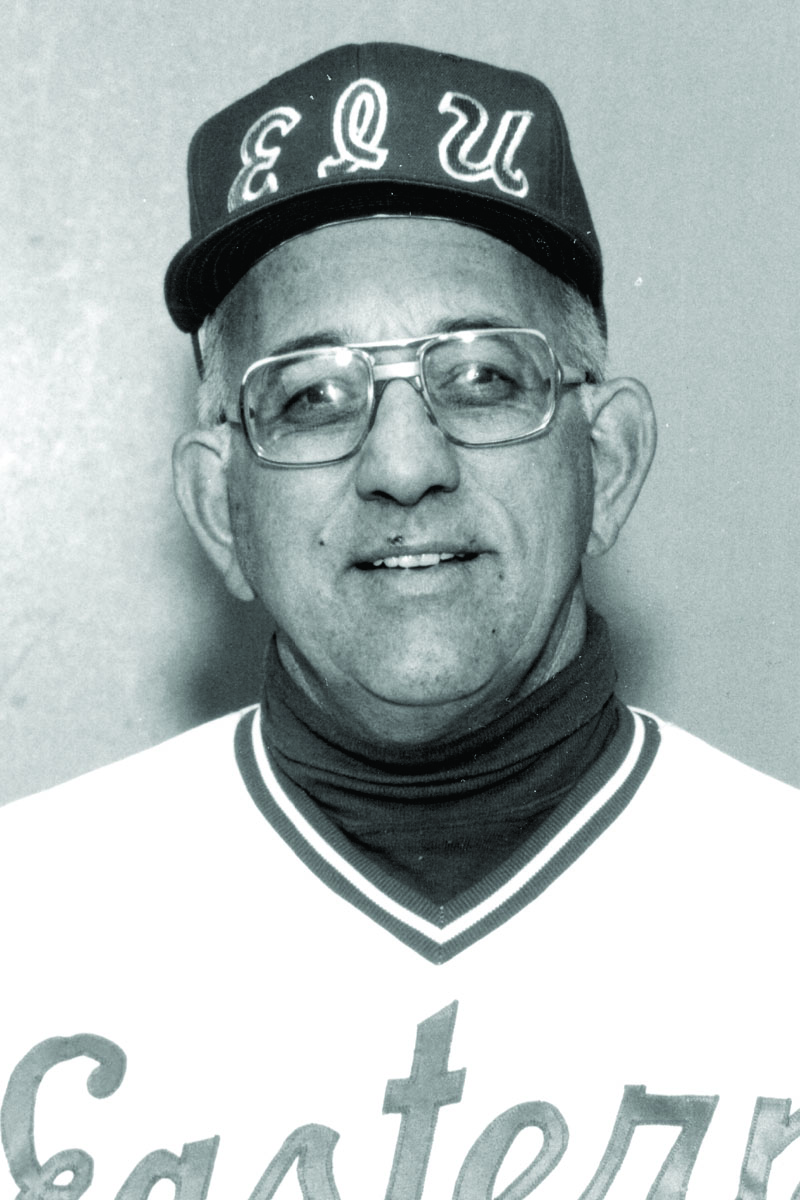
Effingham native Tom McDevitt played baseball four years at Eastern in the 1950s before a brief stint in the St. Louis Cardinals organization.
Being around baseball while employed at Eastern, he says he was “at the right place at the right time” when Panther baseball coach J.W. Sanders resigned as coach.
McDevitt coached 11 years from 1978 to 1988 with a 299-187 record and two NCAA Division II World Series appearances. Twenty-five of his players signed professional contracts, and six reached the Major Leagues.
After coaching, McDevitt was signed as a scout by the Cincinnati Reds, winning a World Series ring in 1991. He later scouted for the Indians and Royals.
He was Seitzer’s coach at Eastern, but almost missed out on the hitting standout.
“I had seen Seitzer play in high school but I only had enough tuition and fees money left for one player, and I had offered it to a pitcher who said he would decide between Eastern and the University of New Mexico,” McDevitt recalled.
“He called me at 10 o’clock on a Saturday morning and said he was going to New Mexico. I had told Seitzer that if the pitcher didn’t take it, he could have the tuition and fees. I called him just after 10 and he said he was glad I called because he was supposed to sign with Illinois State at noon.”
McDevitt said Seitzer had the bat speed necessary to be a standout hitter, but there was more to him as a ballplayer.
“I liked his personality and makeup,” McDevitt said. “He was competitive, he got a little stronger and was extremely coachable.”
Seitzer told McDevitt he didn’t think he would be a big home run hitter for the Panthers.
“I said, in batting practice just after bunting, I want you to hit the next six or seven pitches to the right side. All you have to do is guide the ball.
“I never had to tell him that again,” McDevitt said. “He became an excellent hit-and-run man. He was so coachable. Of course, he had to be able to do it, to hit to the right side, but I never had to tell him something twice.”
McDevitt had some talented players at Eastern but also could spot them as a Major League scout. The best pitchers he saw? Kerry Wood, now of the Cubs; Rick Ankiel, former St. Louis Cardinal; and Roy Halladay of the Phillies.
The top hitters? Slugger Jim Thome, who signed with Cleveland; and Darrin Erstadt and Troy Glaus, longtime Major League players.
“One year when I was scouting with Kansas City, of the top 10 players in my report, nine made it to the big leagues.”
Fred White
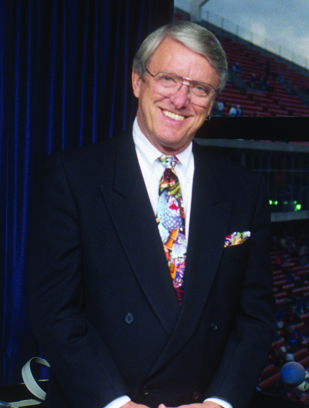
Fred White serves as the Royals’ director of broadcast operations and alumni after being a radio voice of the team for 25 years.
He was an Eastern student in 1955 and 1956 after graduating from Homer High School. He planned on being a teacher and coach but was offered a job in insurance, so he dropped out to go into business. Later, he began working in radio while living in Danville and eventually broadcast a lot of college football and basketball, even working with ESPN.
He did several University of Illinois basketball games on TV, and in one of those broadcasts the Illini opponent was Eastern Illinois.
But he spent the majority of his career with the Royals.
“Marty Pattin already had a lot of success in Major League Baseball when he came to the Royals,” White said. “I introduced myself to him and we had an instant connection with Eastern and with Walt Warmoth because I had also worked for Walt. Marty was a key member of some very good teams here.”
Seitzer came a bit later, but White again noted the Eastern connection.
“The background similarities (with Pattin) of another small-town boy were there. Instantly, Kevin became a star player. When you have those commonalities, you pay attention.
“Marty and Kevin were two of the hardest-working guys we ever had here,” White said. “Marty was just relentless and so is Kevin. If there is a night game, Kevin is usually here by noon. That’s part of what made him successful, hard work.”
White said he recognized a few buildings when he visited Charleston about 10 years ago.
“I could find Walt’s (Marty’s), Lantz Gym (now McAfee) and Ike’s Little Campus,” he said. “I saw the grave of Napoleon, the dog who was the king of campus for a number of years.”
White said it’s not surprising that five former small-town boys from Eastern found Kansas City to their liking in professional baseball.
“Kansas City is a great city but it’s a small city, one of the smallest cities in Major League Baseball,” he said. “People from smaller communities can be comfortable here. For about 10 years, from 1975 to 1985, the Royals battled the Yankees on even terms. It was like David vs. Goliath.
“Coming from Illinois, where for many years there was one class in high school athletics, those of us from small towns understood David vs. Goliath,” he said.
And White said that even though he didn’t get the complete “college experience” that four years at Eastern might have offered, he got a similar education in baseball.
“I missed a lot but I was able to make up for it with my association with Major League Baseball,” he said. “You have the same close-knit relationships. This is a fraternity. You spend more time with the baseball team than with your family. It’s a very close-knit group.
“I sometimes feel like an impostor when people say I’m from Eastern because I didn’t graduate,” he said. “But, I have a great fondness for Eastern because of people like Walt Warmoth, because of my high school friends who did graduate and because of the institution itself.”
-- Written by Bill Lair '70
(c) 2012 Eastern Illinois Alumni magazine. Used with permission.









